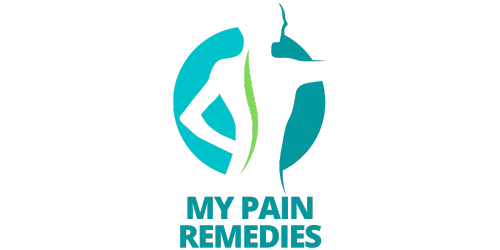Are you tired of dealing with constant leg pain as you age? Don’t worry, there’s no need to fret anymore. In this article, we will explore some effective home remedies for leg pain in old age. So, if you’re searching for natural solutions to alleviate discomfort and enhance your mobility, look no further! We’ve got you covered with simple yet powerful remedies that will help you get back on your feet and enjoy a pain-free life. Read on to discover the secrets to relieving leg pain without relying on medication or invasive treatments.
Essential Oils
The use of essential oils has gained popularity in recent years due to their potential therapeutic benefits. When it comes to relieving leg pain, there are a few essential oils that can be particularly effective. One of the most commonly used oils for pain relief is lavender oil. Lavender oil has properties that can help relax muscles and reduce inflammation, making it a great option for easing leg pain. Another essential oil that can be beneficial is peppermint oil. Peppermint oil contains menthol, which has a cooling effect that can soothe sore muscles and joints. Finally, eucalyptus oil is also known for its analgesic and anti-inflammatory properties, which can help provide relief from leg pain. To use these essential oils, simply mix a few drops with a carrier oil, such as coconut or jojoba oil, and massage onto the affected area.
Hot and Cold Therapy
Hot and cold therapy can be an effective way to alleviate leg pain, especially when caused by muscle strains or injuries. Applying a warm compress to the affected area can help improve blood circulation and relax muscles, providing relief from pain. To make a warm compress, soak a towel in warm water and wring out the excess moisture. Then, apply the warm towel to the leg for about 15-20 minutes. On the other hand, if the leg pain is accompanied by swelling or inflammation, a cold compress may be more beneficial. The cold temperature can help reduce swelling and numb the area, providing temporary pain relief. To create a cold compress, wrap ice cubes in a towel or use a cold pack and apply it to the affected leg for 10-15 minutes at a time.
Ginger
Ginger is a versatile herb that has been used for centuries to treat various ailments, including leg pain. Ginger has anti-inflammatory properties that can help reduce pain and swelling in the legs. One way to incorporate ginger into your routine is by drinking ginger tea. To make ginger tea, simply steep a few slices of fresh ginger in hot water for about 10 minutes and enjoy. Another option is to create a ginger poultice. To make a poultice, grate fresh ginger and mix it with a small amount of water or carrier oil to create a paste. Apply the paste directly onto the affected leg and cover with a clean cloth. Leave it on for 15-20 minutes before rinsing off.
Turmeric
Turmeric is another natural remedy that can be effective in relieving leg pain. Turmeric contains a compound called curcumin, which has strong anti-inflammatory properties. One way to incorporate turmeric into your routine is by drinking turmeric milk. To make turmeric milk, simply mix 1 teaspoon of turmeric powder with a cup of warm milk and honey for taste. You can also create a turmeric paste by mixing turmeric powder with water to form a thick consistency. Apply the paste directly to the affected leg and leave it on for 15-20 minutes before rinsing off.
Epsom Salt Bath
Taking a bath with Epsom salt can be a soothing and effective way to relieve leg pain. Epsom salt, also known as magnesium sulfate, can help relax muscles and reduce inflammation. To prepare an Epsom salt bath, fill a bathtub with warm water and add 2 cups of Epsom salt. Mix the salt until it dissolves and then soak in the bath for 20-30 minutes. The warm water and Epsom salt will work together to relieve muscle tension and provide relief from leg pain. Remember to moisturize your skin after the bath to prevent dryness.
Apple Cider Vinegar
Apple cider vinegar is a natural remedy that has been used for centuries to alleviate various ailments, including leg pain. It contains acetic acid and anti-inflammatory properties that can help reduce pain and swelling. One way to consume apple cider vinegar is by making an apple cider vinegar drink. Mix 1-2 tablespoons of raw apple cider vinegar with a glass of warm water and honey for taste. Drink this mixture once or twice a day for optimal results. Another option is to create an apple cider vinegar soak. Fill a basin or bucket with warm water and add 1 cup of apple cider vinegar. Soak your legs in the solution for 15-20 minutes to relieve pain and promote circulation.
Stretching Exercises
Stretching exercises can be extremely beneficial in relieving leg pain, especially when caused by muscle tightness or stiffness. Incorporating these stretching exercises into your daily routine can help improve flexibility, reduce muscle tension, and alleviate pain. One effective stretch is the quadriceps stretch. Stand near a wall or use a chair for support. Bend one leg back and hold onto your foot or ankle, gently pulling it towards your buttocks. Hold this stretch for 30 seconds and then switch to the other leg. Another stretch that can provide relief is the hamstring stretch. Sit on the edge of a chair and extend one leg straight out in front of you. Lean forward from your hips while keeping your back straight, aiming to touch your toes. Hold this stretch for 30 seconds and repeat on the other leg. Lastly, a calf stretch can also help alleviate leg pain. Stand near a wall and place your hands against it for support. Step one leg back and keep it straight, while bending the front leg slightly. Lean forward and push your back heel into the ground, feeling the stretch in your calf. Hold for 30 seconds and switch to the other leg.
Massages
Massages can be incredibly effective in reducing leg pain and promoting relaxation. Not only can they help relieve muscle tension and improve circulation, but they also provide a soothing and comforting experience. If you prefer to perform self-massage, there are various techniques you can try. One technique is kneading, where you use your hands to apply pressure and deeply massage the muscles in your legs. Another technique is effleurage, which involves using long, sweeping strokes to warm up the muscles and increase blood flow. If you have the means, seeking professional massage therapy can be beneficial as well. Professional massage therapists are trained to target specific areas of pain and tailor the massage to your needs, providing targeted relief for your leg pain.
Yoga
Yoga is a gentle exercise that can help improve flexibility, strength, and balance. It can also be beneficial in relieving leg pain, especially when caused by muscle tightness or poor circulation. Chair yoga is a modified version of yoga that can be done while sitting in a chair, making it accessible for individuals with limited mobility. It involves gentle movements and stretches that can help reduce leg pain and improve flexibility. Legs-up-the-wall pose is another yoga pose that can provide relief from leg pain. Lie on your back with your hips close to a wall and extend your legs up the wall. This pose helps improve circulation and reduces swelling in the legs. Lastly, the supine hand-to-big-toe pose is a yoga posture that can help stretch and strengthen the muscles in the legs. Lie on your back and lift one leg up, holding onto your big toe with your hand. Gently straighten your leg and hold the pose for a few breaths before switching to the other leg.
Weight Management
Maintaining a healthy weight is essential for overall well-being, including the health of your legs. Excess weight can put additional strain on the legs and exacerbate existing leg pain. By adopting a balanced diet and engaging in regular exercise, you can effectively manage your weight and reduce leg pain. A balanced diet should include a variety of fruits, vegetables, lean proteins, whole grains, and healthy fats. Incorporating regular exercise into your routine can help strengthen the muscles in your legs and improve circulation. Choose activities that are low-impact and suitable for your fitness level, such as walking, swimming, or cycling. Remember to start slowly and gradually increase the intensity and duration of your workouts. By maintaining a healthy weight, you can alleviate pressure on your legs and reduce the risk of experiencing leg pain.


